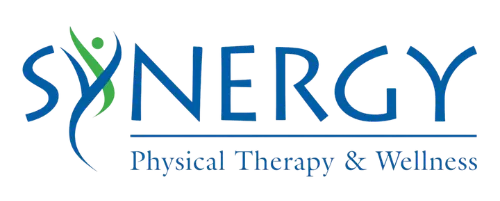Microcurrent therapy is a very safe and effective method used for the treatment of most type of pain inlcuding, neck pain, low back pain, joint pain, nerve pain and neuropathy. This is NOT TENS or muscle stimulation, in fact it’s mechanism of action is actually the opposite. See “Principles behind Microcurrent Therapy” Below if you would like to know more.
What Can I Expect?
Immediate and lasting pain relief! There is NO strong electrical felling and there is NO pain. In fact most of our patients find the treatment quite relaxing.
NEW Developments in Microcurrent Therapy
The Cleveland Clinic, a world renowned innovative healthcare entity, is now using Microcurrent Therapy in the same exact manner we have been right here in Pueblo for over 20 years! They have several pages devoted to this safe and highly effective treatment that you can review here
https://my.clevelandclinic.org/health/treatments/15935-frequency-specific-microcurrent
The history of Microcurrent Therapy

Albert Einstein recognized early on (go figure) that the body responded to specific frequencies and saw the potential application to medicine. Shortly thereafter many scientists and physicians began studying this method. Like many things in modern medicine it can take a very long time to go from recognized benefit and safety to actual widespread adoption. In the 1980s physicians in Europe and the US began using microcurrent devices for stimulating bone repair after severe injuries or surgeries and for speeding up the healing of wounds, particularly in diabetics, and both of these issues are commonly used today.
Fast forwarding to the present time
There are numerous studies published on the effects of single channel microcurrent showing that it increases the rate of healing in wounds and fractures. There is one study showing that micro amperage current between 10 and 500 micro amps increases ATP (cellular energy) production by 500% in rat skin.
Principles behind Microcurrent Therapy
As the name suggests, a very low-voltage (in the millionths of an amp range) current is passed through the affected tissues, joint or region of the body in order to stimulate the body’s healing process. Regular TENS or Muscle Stimulation uses much higher Direct Current power and there are two concerns with this.
Each and every cell of the body has its own electric frequency. Due to abnormal conditions or injury, the bioelectric frequency of the cell is disturbed. Microcurrent therapy is based on the principle that, application of current that is similar to the body’s bioelectric current enhances the tissues response to healing and repair. Microcurrent therapy has been very effective for such conditions as soft tissue inflammation, muscle pain, fibromyalgia, neuropathy, bone bruising, delayed fracture healing and pain associated with shingles. Please see www.frequencyspecificmicrocurrent.com for a list of testimonials.
Micro-current Therapy: Procedure and Healing Process
In microcurrent therapy, VERY LOW power current is administered to various parts of the body. The duration for microcurrent application may last anywhere from 15 – 90 minutes depending on the condition being treated.
Studies have revealed that microcurrent therapy helps in restoring metabolic processes that are responsible for healing. (Please see www.frequencyspecificmicorcurrent.com). It is believed that microcurrent can regulate the energy levels of the body by promoting ATP (adenosine triphosphate) production, which is the major fuel for all the biochemical reactions of the body. As energy levels increase, the body’s ability to remove metabolic wastes is enhanced, hence preventing accumulation of toxic substances, enhancing nutrient distribution and improving blood circulation, thus, helping the body produce new healthy cells and replace the injured ones.
What are some of the other conditions that Microcurrent Therapy can treat?
Achilles Tendinitis
Adhesions
Back Pain
Bell’s Palsy
Bone Fractures
Carpel Tunnel Syndrome
Chronic Regional Pain Syndrome
Concussion
Disk Injuries
Fibromyalgia
Fibrosis
Fractures
Frozen Shoulder
Headaches
Joint Pain/Instability
Myofascial Pain
Osteoarthritis
Neuromuscular Pain/Inflammation
Nerve injuries
Peripheral Neuropathy
Post-Surgery Pain
Reflexive Sympathetic Dystrophy (RSD)
Scar Tissue
Sciatica
Spinal Disc Pain
Sports Injuries
Sprains/Strains
TMJ (Jaw) Pain
Tennis Elbow
Whiplash Injuries
Wound Healing (as related to surgical incision)
The only contra-indications for microcurrent therapy are for those people who have pacemakers, active cancer in the region of treatment or are currently pregnant. In order for FSM to be fully effective, it is very important that those receiving FSM are well hydrated prior to and during their treatment.
More info…
Microcurrent was first used in the 1980s by physicians in Europe and the US for stimulating bone repair in non-union fractures. There are numerous studies published on the effects of single channel microcurrent showing that it increases the rate of healing in wounds and fractures. There is one study showing that micro amperage current between 10 and 500 micro amps increases ATP (cellular energy) production by 500% in rat skin.
Effects of microcurrent
In 1982 Ngok Cheng published, The Effect of Electric Currents on ATP Generation, Protein Synthesis and Membrane Transport in Rat Skin in Clinical Orthopedics volume 171: pages 264-272. This study showed that microcurrent increased ATP production in rat skin by 500%. ATP is the chemical that the body uses for energy. The current also increased amino acid transport into the cell by 70% and waste product removal. The implications for human healing and repair are obvious. ATP production was increased as long as the current was below 500 microamps. When the authors increased the current to 1000 micro amps, or one milliamp, a current range delivered by TENS devices and other types of electrical stimulation therapies, the ATP production was actually reduced. Essentially, even though standard TENS or Electrical Stimulation sometimes results in short term pain relief (1-2 hours) it may actually reduce tissue healing.
Joe Ruzich, PT has been trained and certified in the advanced use of Frequency Specific Micro-Current (FSM) by Dr. Carol McMakin, DC and is the only certified FSM practitioner in the Pueblo area.
CALL TODAY TO RESERVE YOUR FREE CONSULTATION!
(719) 568-9790
